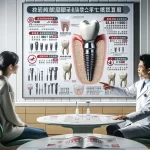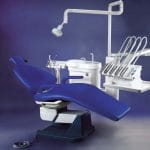In today’s fast-paced healthcare landscape, teledentistry stands out as a revolutionary solution, reshaping how dental services are delivered and enhancing patient outcomes. By harnessing advanced telecommunication technologies, teledentistry enables dental professionals to conduct remote consultations, diagnoses, and treatment planning. This innovative approach effectively bridges geographical gaps, ensuring timely care for patients who need it most. Particularly beneficial for underserved communities facing barriers to traditional dental care, teledentistry holds immense potential to transform oral health access and management.
The Advantages of Teledentistry
Expanding Accessibility to Dental Care
One of the most significant benefits of teledentistry is its ability to broaden access to dental services, especially for individuals in remote or underserved areas. By removing geographical barriers, patients can receive expert dental consultations from the comfort of their homes or local community health centers. This increased accessibility is crucial for those facing mobility issues, transportation challenges, or time constraints. With teledentistry, high-quality dental care becomes more attainable without the need for extensive travel.
Early Detection and Prevention of Oral Health Issues
Teledentistry plays a vital role in the early detection and prevention of oral health problems. Through virtual consultations and remote screenings, dental professionals can identify potential issues at their nascent stages, allowing for timely intervention and minimizing the risk of severe complications. Utilizing advanced imaging technologies and secure data-sharing platforms, dentists can review patient records and intraoral images remotely, facilitating accurate diagnoses and personalized treatment plans. This proactive approach significantly enhances patient outcomes while reducing the overall burden on the healthcare system.
Streamlining Treatment Planning and Collaboration
Another key advantage of teledentistry is its ability to streamline treatment planning and promote collaboration among dental professionals. Virtual consultations enable dentists to collaborate with specialists such as orthodontists or oral surgeons seamlessly. This coordinated effort not only improves the quality of care but also reduces the need for multiple in-person visits, saving patients valuable time and resources. By leveraging the expertise of various professionals through teledentistry, patients receive comprehensive treatment plans tailored to their specific needs.
Implementing Teledentistry: Challenges and Strategies
Technological Requirements and Training
While teledentistry offers numerous benefits, successful implementation requires careful consideration of technological needs and staff training. Dental practices must invest in reliable telecommunication platforms, high-quality imaging equipment, and robust data management systems to facilitate seamless virtual consultations. Additionally, comprehensive training on using these technologies is essential for dental professionals and support staff to ensure effective remote communication and data privacy.
Enhancing Patient-Dentist Interactions
Effective communication between patients and dentists is crucial for successful teledentistry outcomes. Dentists must adapt their communication strategies to the virtual environment by providing clear explanations of diagnoses and treatment plans while actively listening to patient concerns. Utilizing educational materials such as videos or interactive guides can further empower patients in managing their oral health actively.
Clinical Outcomes and Patient Satisfaction
Improved Health Outcomes
Numerous studies highlight the positive impact of teledentistry on clinical outcomes and patient satisfaction. By enabling timely access to dental care and facilitating early intervention, teledentistry has been shown to improve oral health outcomes significantly. For instance, a study found that 97.2% of children receiving teledentistry interventions successfully completed their treatment plans at specialty dental clinics—demonstrating its effectiveness in ensuring continuity of care.
Enhanced Patient Satisfaction
Patient satisfaction has consistently been high in teledentistry settings. Patients appreciate the convenience and personalized attention offered by this approach, leading to increased engagement with their treatment plans. A recent survey by the American Teledentistry Association revealed that over 90% of patients utilizing teledentistry services reported high satisfaction levels due to reduced travel time, shorter wait times, and receiving care in a comfortable environment.
The Future of Teledentistry: Trends and Opportunities
As teledentistry continues to gain traction, several exciting trends are emerging:
- Integration of AI: The increasing incorporation of artificial intelligence (AI) into teledentistry platforms enhances automated screening, risk assessment, and treatment planning.
- Public Health Initiatives: Growing adoption in community outreach programs allows dental professionals to extend their reach to underserved populations.
These trends suggest that as teledentistry evolves, it will become an integral part of dental care delivery—complementing traditional in-person services while expanding possibilities in oral health management.
Conclusion: Embracing Teledentistry’s Transformative Potential
Teledentistry represents a paradigm shift in delivering dental care—offering powerful solutions for expanding access, improving outcomes, and enhancing patient satisfaction. By leveraging advanced technologies tailored to meet evolving patient needs, dental professionals can harness this transformative potential to deliver high-quality care globally. As we look ahead, it is evident that teledentistry will play an increasingly vital role in shaping the future landscape of oral health. By embracing this innovative approach and investing in necessary infrastructure and training, dental practices can lead this exciting frontier—delivering exceptional care while driving positive change within dentistry.
The latest advancements in dental technology for 2024 include AI-driven diagnostic tools, 3D printing for custom dental appliances, and advanced imaging techniques for more accurate and less invasive procedures.
Artificial intelligence is being integrated into dental care through smart diagnostic systems that can analyze X-rays and scans, predict patient outcomes, and assist in creating personalized treatment plans.
3D printing plays a significant role in modern dentistry by enabling the creation of precise dental implants, crowns, and orthodontic devices tailored to the individual’s anatomy, often within the same day.
Yes, new materials such as zirconia and various biocompatible composites are being used in dental procedures for their durability, aesthetic appeal, and compatibility with the human body.
Innovations improving patient comfort include sedation techniques using digital tools for controlled delivery, virtual reality for distraction, and enhanced recovery protocols to reduce post-treatment discomfort.







